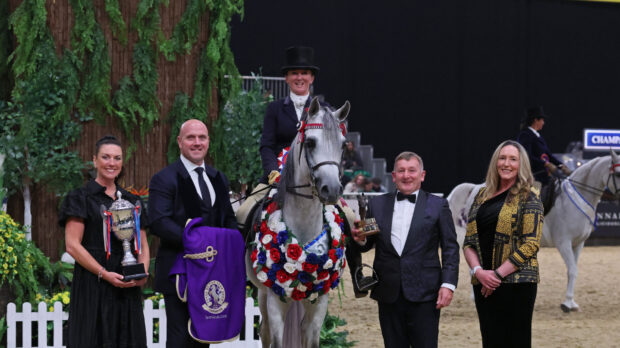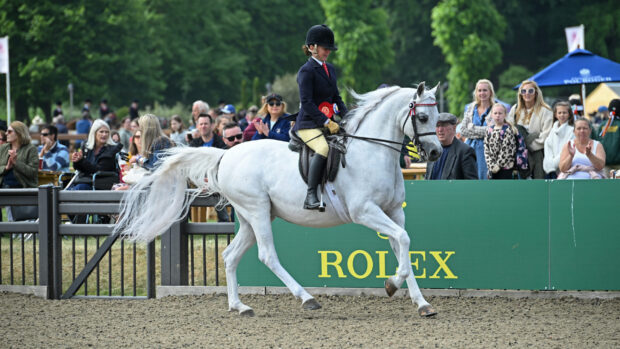An Arabian colt bred to have an extremely dished facial profile represents a “worrying development” according to a number of British vets.
Nine-month-old El Rey Magnum is considered to be “close to perfection” by his breeders at Orrion Farms in Washington State, US, who claim the young horse is already worth “several million dollars” and has attracted interest from around the world, including the UK.
After the stud issued a promotional video featuring the colt on social media this month, opinion has been polarised. While some described the colt as “very special”, others considered his looks to be “freakish”.
Many critics fear the breed trend is one of the first representations in the horse world of the sort of detrimental practices that have affected dogs such as the pug.
A series of UK vets expressed concerns to the Veterinary Record, fearing the colt’s exaggerated skull conformation could have an impact on its breathing.
Equine reproduction expert Jonathan Pycock said he thought the horse looked “cartoon-like”.
“My gut reaction is it is awful — I don’t like the look of it. It’s not particularly attractive,” he said. “I would imagine this horse could have respiratory problems — you would have to test it for sure — but you can’t say with any certainty that respiratory problems won’t develop. It would seem to have the potential to impact negatively on its health in terms of air intake.”
He added that problems arise when “breeding for looks” that could be “detrimental to a horse’s health”.
“In my book, that is fundamentally wrong. This is a worrying development,” he said.
“We don’t see examples of this sort of extreme breeding where you breed horses for their appearance in the horse world – you do see examples of breeding to improve performance in racing or jumping, but that’s different.”
Vet Dr Madeleine Campbell, who is a specialist in animal welfare science, ethics and law, told H&H that while it is difficult to comment on a horse she had not seen in the flesh and examined, “it does raise an issue if there is an trend towards extreme conformation and looks potentially compromising welfare”.
“I can’t tell you if it can breathe normally just from looking at a photo but as a general ethical principle it must be wrong to breed for traits that even run the risk of compromising the horse’s ability to breathe,” she said.
“It is completely analogous with arguments about dogs being bred for fashion. It doesn’t fit in well with society’s shift towards better standards of animal wellbeing.”
She said that elsewhere in the US, breed standards had moved to a more ethical approach, with the American Quarterhorse Association now moving towards eliminating genes such as HYPP for which some breeders had previously selected.
“They now use genetic tests to accurately identify carriers and breed it out of the population. That is a good example of a breed society taking appropriate action to correct a problem and making use of modern technology to do so.”
Annette Dixon, chairman of the Arab Horse Society Great Britain, said she thought the colt’s dished profile appeared “very extreme”.
“The head of the Arabian horse is a distinctive feature, wedge shaped and wide between the eyes with a small muzzle,” she explained, adding that the breed standard described a “small dish” as “desirable but not essential” as “we have to think of the airways of the horse.”
“We say the horse needs plenty of room for airways — it has a deep jowl with lots of room, wide underneath with a very elastic nostril. It is an important feature of the Arabian horse, hence its reputation for stamina,” she said.

Irish draughts are getting rarer
A new study has found that Irish Draught

Is your dog a genius?
Dog owners are invited to test the intelligence

Film star to downsize Arab breeding operation
The Hollywood actress is downscaling her Arab breeding
Annette added that functionality is important, as the society encouraged the use of Arabian horses for all disciplines in the UK.
“We promote them for endurance, ridden showing, dressage, showjumping and as family horses — the society continues to promote it as a versatile animal, we promote its welfare and we try to educate owners and breeders,” she said.
For all the latest news analysis, competition reports, interviews, features and much more, don’t miss Horse & Hound magazine, on sale every Thursday.




